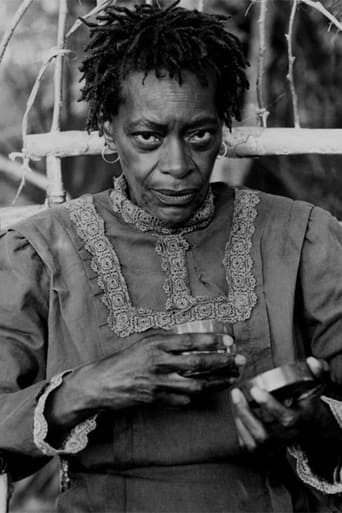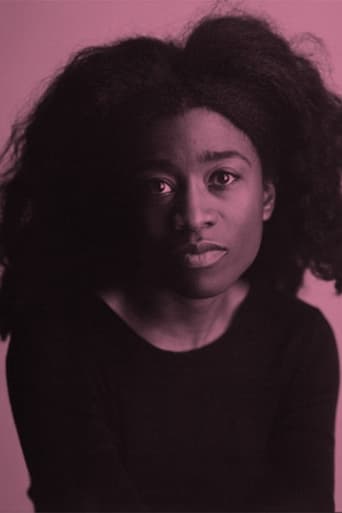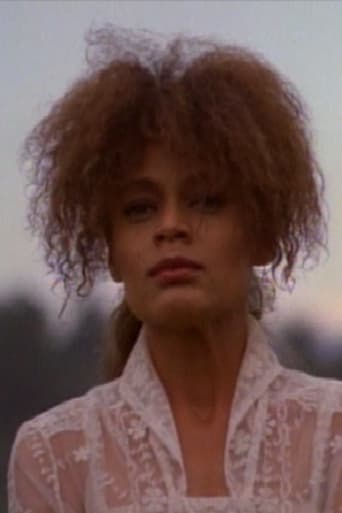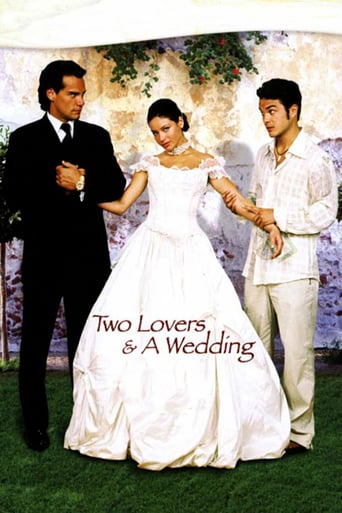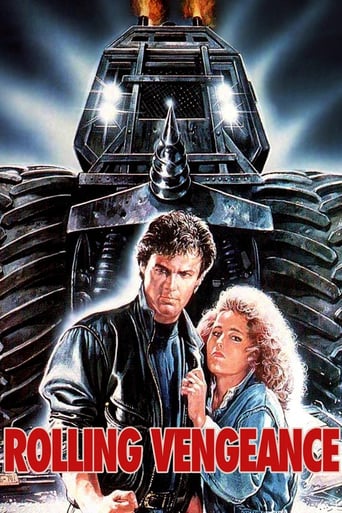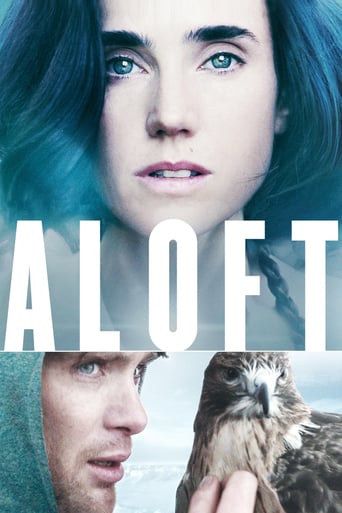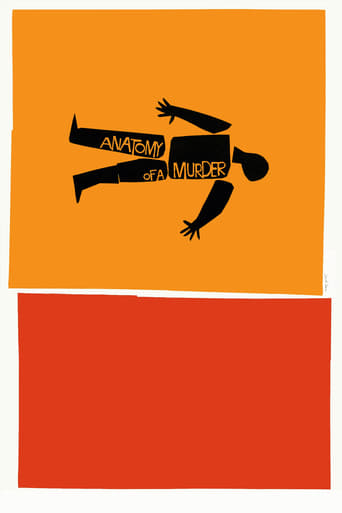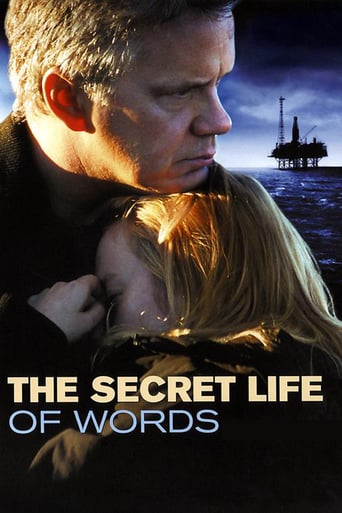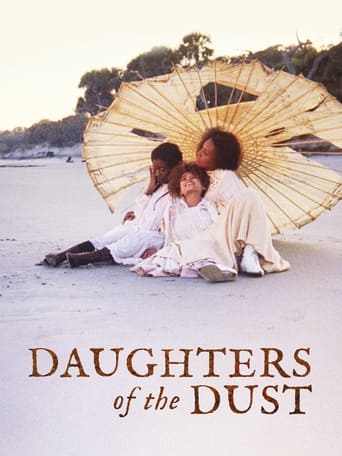
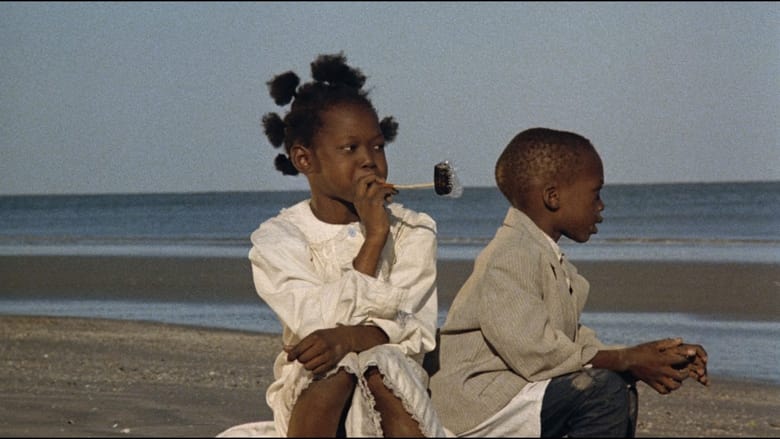
Daughters of the Dust (1992)
In 1902, an African-American family living on a sea island off the coast of South Carolina prepares to move to the North.
Watch Trailer
Cast
Similar titles
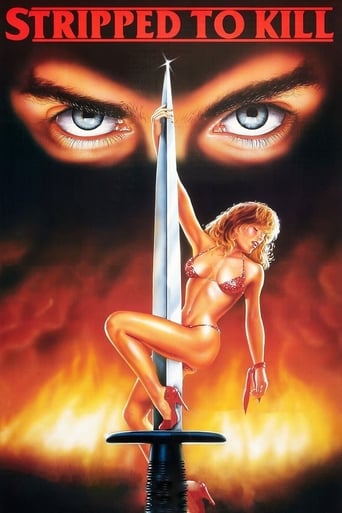
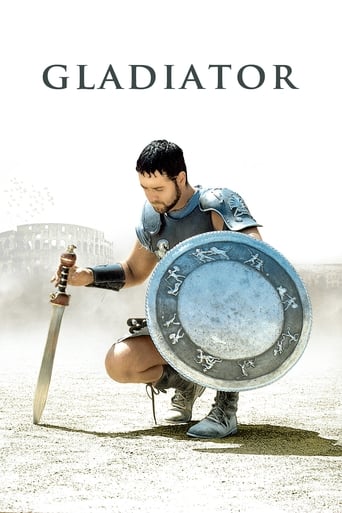
Reviews
Very best movie i ever watch
It is a performances centric movie
This is a gorgeous movie made by a gorgeous spirit.
The film's masterful storytelling did its job. The message was clear. No need to overdo.
Daughters in the Dust is one of those rare movies that truly makes you wonder long and hard about the possibilities of the film form. The film as pure narrative leaves much to be desired; yet it's is not concerned about telling the intricate and sentimental goings-on of one or two human beings; a single tale told in one moment in time. No, the film's scope is much wider and anthropological in scale, thus requires more than just a passing judgment on its entertainment value.The film concerns itself with the Peazant family; proud members of Gullah creoles who originated from slaves traded along the remote islets of South Carolina and Georgia. Even before the Civil War generations of the Gullah people lived quietly as rice farmers on these islands and thanks in large part to regional isolation they were able to rebuild and retain much of the linguistic, cultural and religious heritage that had been wiped out by the slave trade. By 1901, the Peazants are mulling over the idea of relocating to the mainland.The film has the narrative distinction of being told from the perspective of an unnamed and unborn member of the Peazants played by Kay-Lynn Warren. At only four, the young Warren peeks through the hole of her family's history only appearing twice herself as a sprite. We meet her pregnant mother Eula (Rogers), her aunts Haagar (Moore), Viola (Bruce) and Yellow Mary (Barbara-O) as well as Nana (Day) the matriarch of the family. Nana is old enough to remember the scourge of slavery and as a result is resonant to move to the mainland. Meanwhile Haagar is the strongest advocate for the move saying "If Nana wants to live and die on this island, then God bless her old soul." Two members of the clan have already moved away; Viola who moved to Philadelphia to become a ardent Christian; and Yellow Mary, who according to Viola is a "wasted woman".Despite showcasing a family hungry for change and progress, the film gives proper reverence to the traditions of the Gullah people. The most respected people on the island are the elders who consist of Nana and Bilal Muhammad (Abdurrahman) the resident mullah. The spiritual ceremonies of the family relies on a mixture of Christianity, Islam and African animism that gives everything natural around them a lyrical quality. Yet underneath the pleasant depictions of sun-soaked beaches and marshy lowlands the internal conflict behind the eyes of the Peazants can't help but surface during communal gatherings. "We are two people in one body," says Nana as she defies the rest of the family who hope to travel north with their hopes and dreams.If there is one glaring problem with Daughters of the Dust it's its expectations of the viewer. During production director Julie Dash wanted to keep the authenticity of the people intact and thus had actors speak only in the Gullah dialect and didn't consider subtitles. A minority of audience members may find this tact a mesmerizing exercise in linguistics. A feeling not unlike hearing the warm familiar sounds of your parents speaking while you were a toddler. From a purely anthropological perspective this was the best narrative choice one could hope for, allowing those with patience further rewards with repeated viewings. Unfortunately if you're not one of patience or a strong interest in anthropology or etymology you might find yourself distracted and looking for other stimuli.There are many ways to read a movie of this nature. Most movies start and end with a graspable narrative, quick and easy explanations to plot details and an clear resolution. Daughters of the Dust doesn't let you off the hook with easy solutions. It instead asks serious questions. Questions that highlight the consequences of modernity's encroachment on tradition, cultural identity, cross-generational turmoil and diaspora. Furthermore the movie gives willing audiences a sense of belonging among the Gullah people; a warmth you seldom feel on the screen. It also does so in a very spirited and exquisite way featuring some of the most lyrical visual storytelling $800,000 can buy.
This is one of the finest black films of the last twenty years. Julie Dash has created an evocative portrait of African American life that still holds an African past in the cradle of everyday life. The film is also a brilliant depiction of gender relations in black communities. Daughters of the Dust presents a vital, spiritual, and haunting portrait of black women, their agency and their connection to a nurturing ancestral past. Very few films about black people seriously explore the deep spiritual connections between Old and New World, and fewer still look so carefully at a particular community. The Gullah people of the Sea Islands are a group that remains largely unknown in both mainstream and black culture. As group that has clearly adapted to life in a new place, they still demonstrate powerful connections to an African past. In their adaptation and connection, they show the strength and resilience of black communities and cultures.
Turning the Page for African-American FilmsThe mid nineteen eighties and early nineties were chock-full of films displaying discriminating evidence against the African-American community. Films such as Boyz in the Hood, Menace to Society, and Friday demonstrated a stereotypical theme of gangbanging hoodlums that settled into the minds of the nation. If films representing the African-American man weren't incriminating enough, the alternative option was misrepresentation through the music industry. Milli Vanilli, once proven unauthentic, made an embarrassing impression that is still humored on late night television. MC Hammer, LL Cool J and other music artists help to upturn the music industry with their ability to direct trends for urban culture. Artists fresh new styles were a simple antidote for one industry. However, the film industry was still rendered and in search of its hero. The hero finally came in Julie Dash's Daughter's of the Dust in 1991. A deeper search than black baggy pants had to come along for an impact to be felt. The deeper search led Julie Dash into African-American history and a peasant family from a subculture known as Gullah. Dash's poetic portrayal relieved the nation's minds of problems in the black community by celebrating its past. While the film was still very dramatic, it was able to capture the audience with its breathtaking scenes. Most famous of which was the picnic scene that the family found itself in a debate of traditional and modern ways.This film had its twist and turns but made a lasting impression with its individuality from other films. The characters all had climatic problems, but were portrayed as free and independent from the hardships that are faced by poor urban society today. This made for a break in the downward trend of a current representation of the black community. Jokingly, this film should be more highly regarded than even MC Hammer's legendary baggy pants.
The film Daughters of the Dust is argued to be a stand out film in the genre of feminist film theory. The film is to show a break from the traditional male and female roles in a society; to break away from the traditional narrative to represent the present, past, and future as one to show woman as a strong active influential being. Yet, it did not accomplish this task.The film's narrative has a circle feel bring elements of the past, present and future together as one unit in the form of the child with the indigo ribbon. Images of the enslaved people of the islands are counter set by images of the modern dressed family awaiting the boat to go to America's main land. The family is to be mainly formed on this island after slaves were brought there to work in the indigo market, it is to be formed around this one woman. She takes on the lead role of the family, the matriarch in this instance instead of the patriarch. This attempt to change from the patriarch fails for the matriarch takes on the same role with the same strong masculine tendencies. The feminist ideals and theories are also lost as the woman of the family cook and tend to the work of packing for the journey while the men are relaxing and talking the day away. Yet, as the woman of the family do work they argue and talk. These woman in turn are to represent the different woman of society; the audience sees the daughter, the mother, the wife, the modern social woman, the elderly, the religious, the rebellious and the quite individuals that make up all social structures.Having the present, past and future working together as one creates too much confusion in the eye of the audience. At different instances the ideas are hard to connect to the ideals of the film theory and follow the themes of the narrative for it jumps around too often. Not introducing all the characters is another flaw of the film. The audience is lost as to how they fit into this family, how they are important to the plot of the new daughter changing the lives of the family members in the mainland, and how they affect the feminist film theory. In the end, not all the questions or problems that the film poses are answered and not all the loose ends are tied up. The style chosen to show a strong feminist woman was made in a too particular way. It was made for only a small subset of society where not all persons could identify with the characters and care for the meaning of the migration to the mainland. Instead the film creates a feeling of detachment, where the audience becomes uninterested. The ideals and theories for such a film are strong in context and in thought but fail to come across in the execution of the project. The true concept of the film is lost within the frame work of the circular plot and the feeling of randomness to some of the films content. This film does in turn do a good job of showing the complexities of a family, mixing old traditions and new as they are passed to different generations, and addressing fears that come when entering into a new society or world that one does not truly understand or know.
